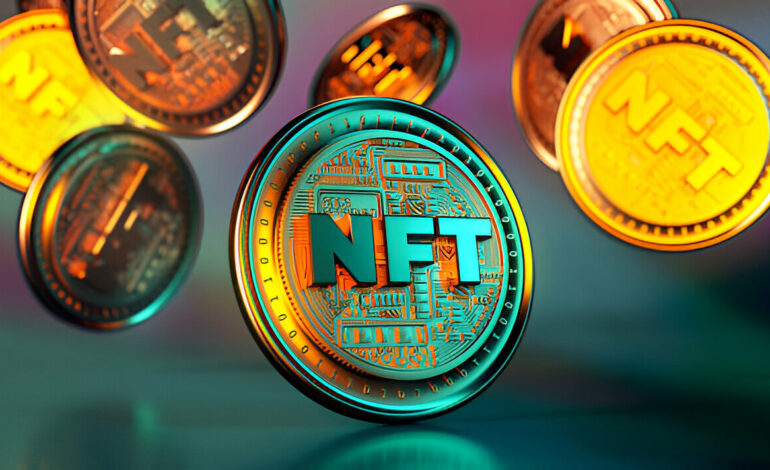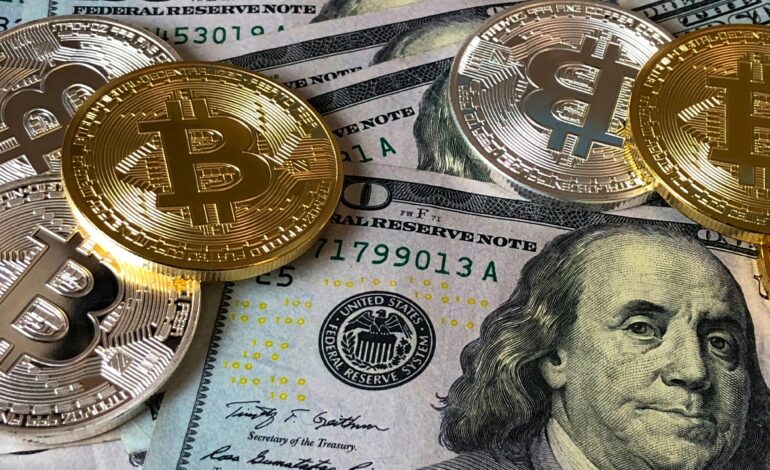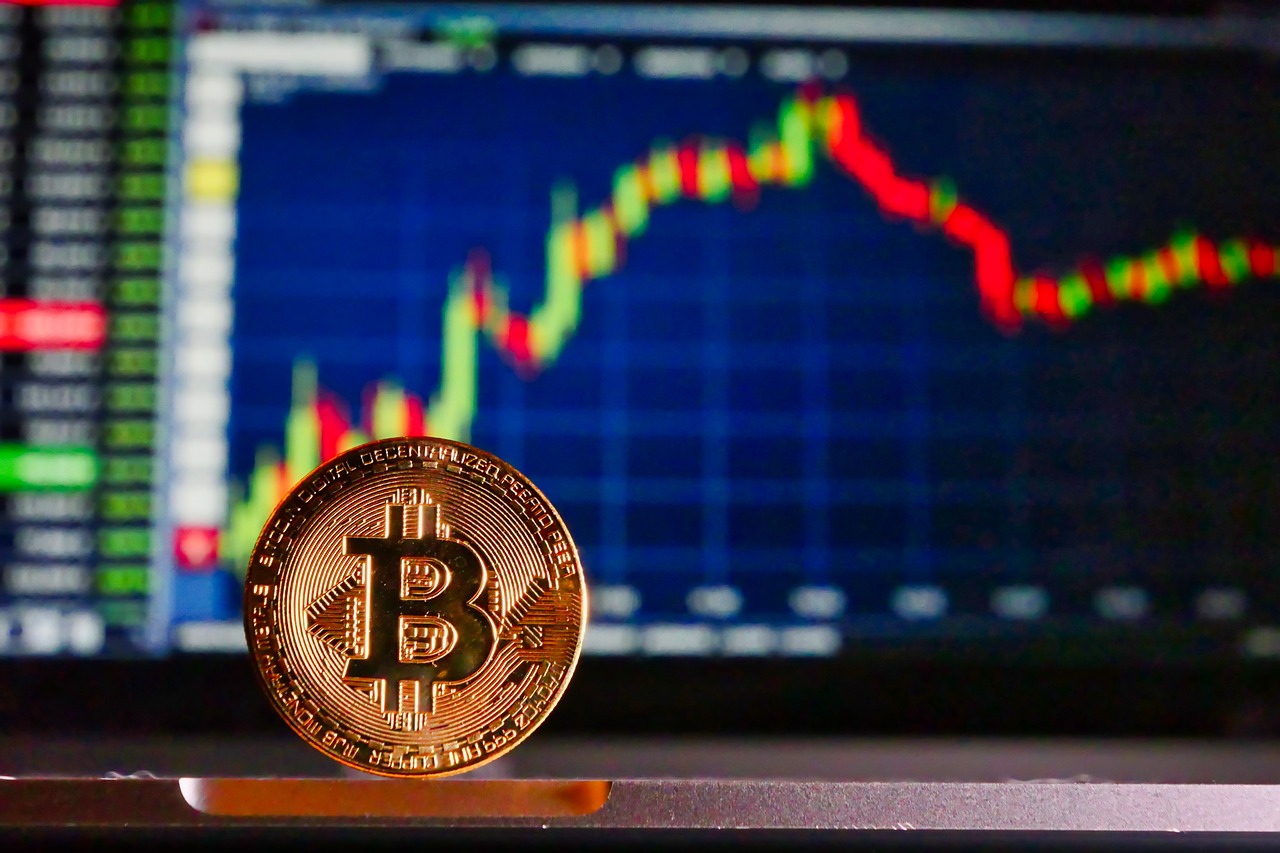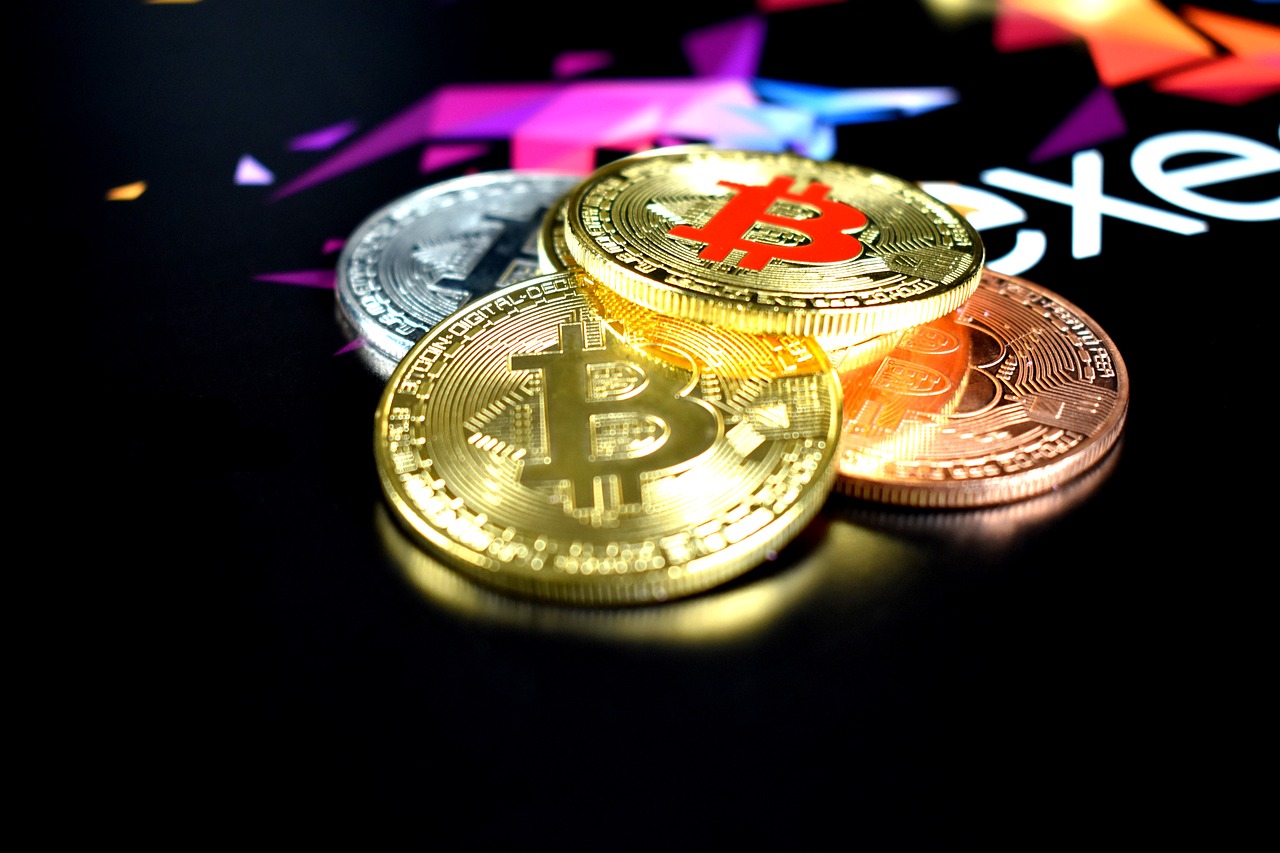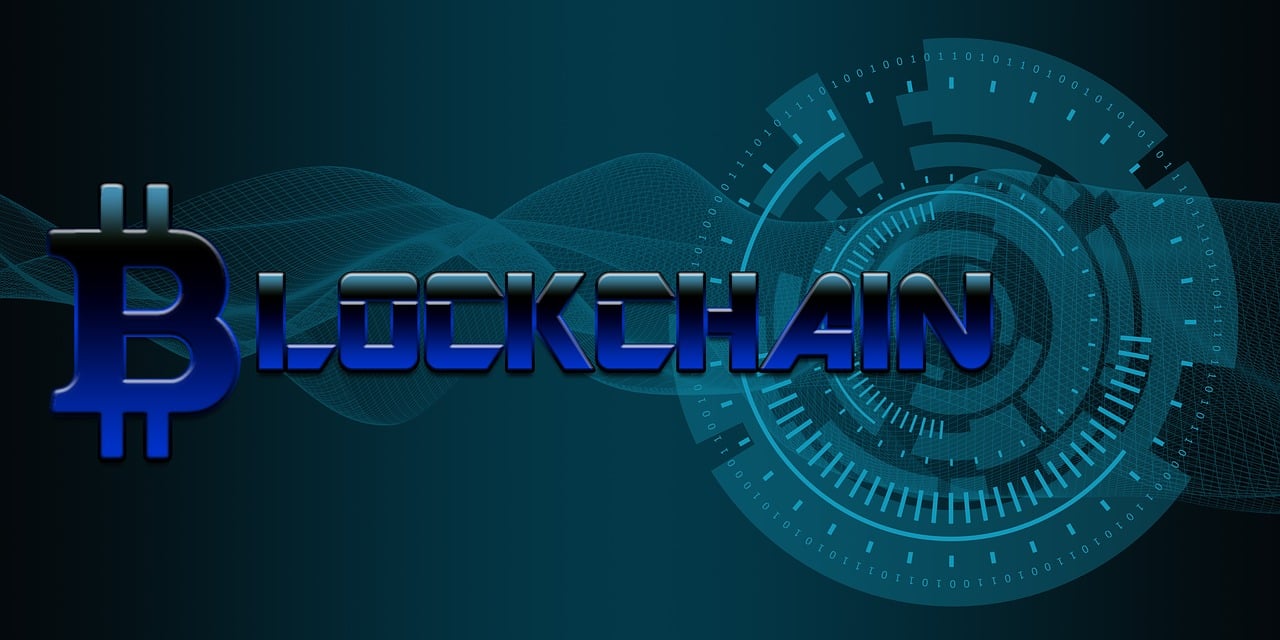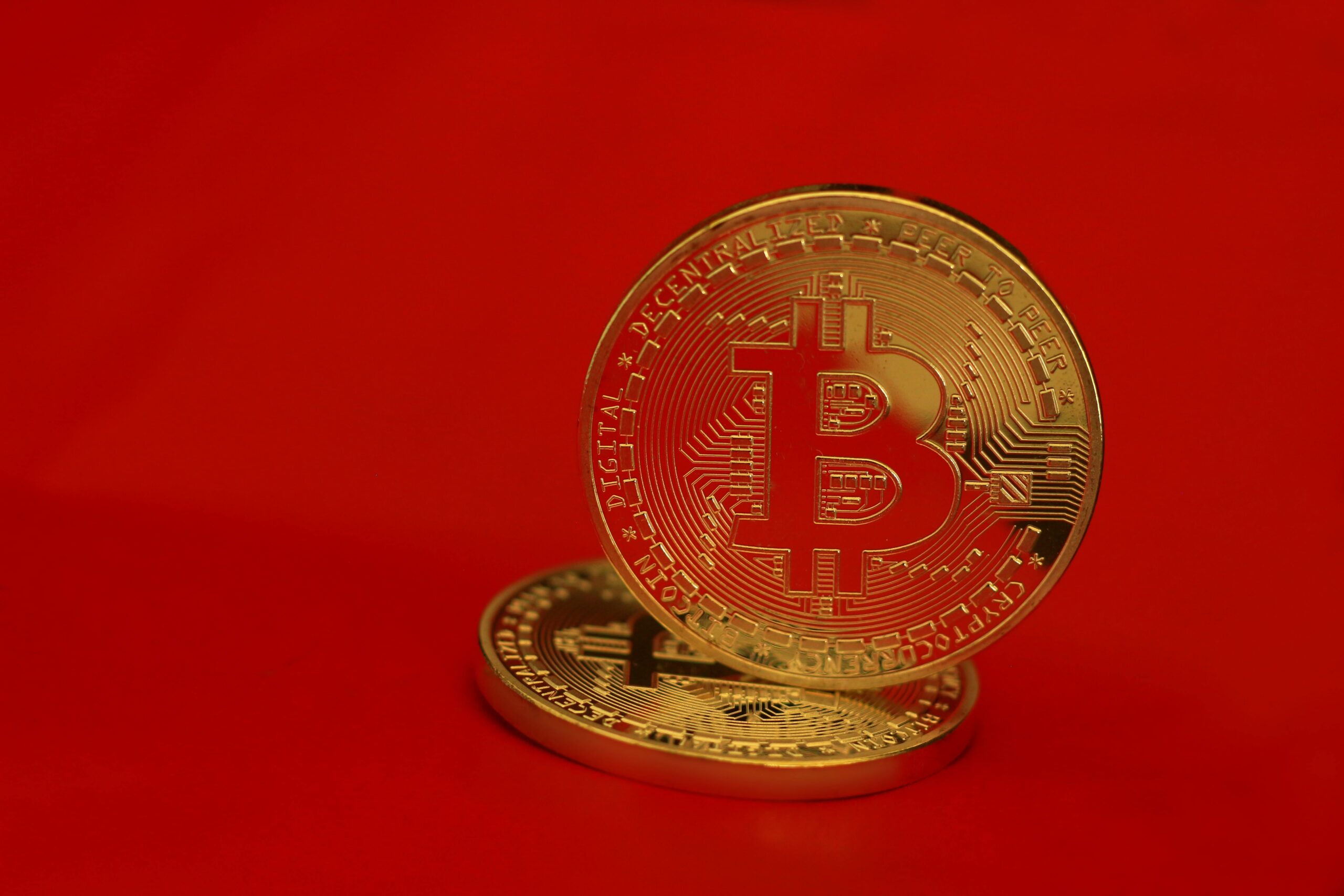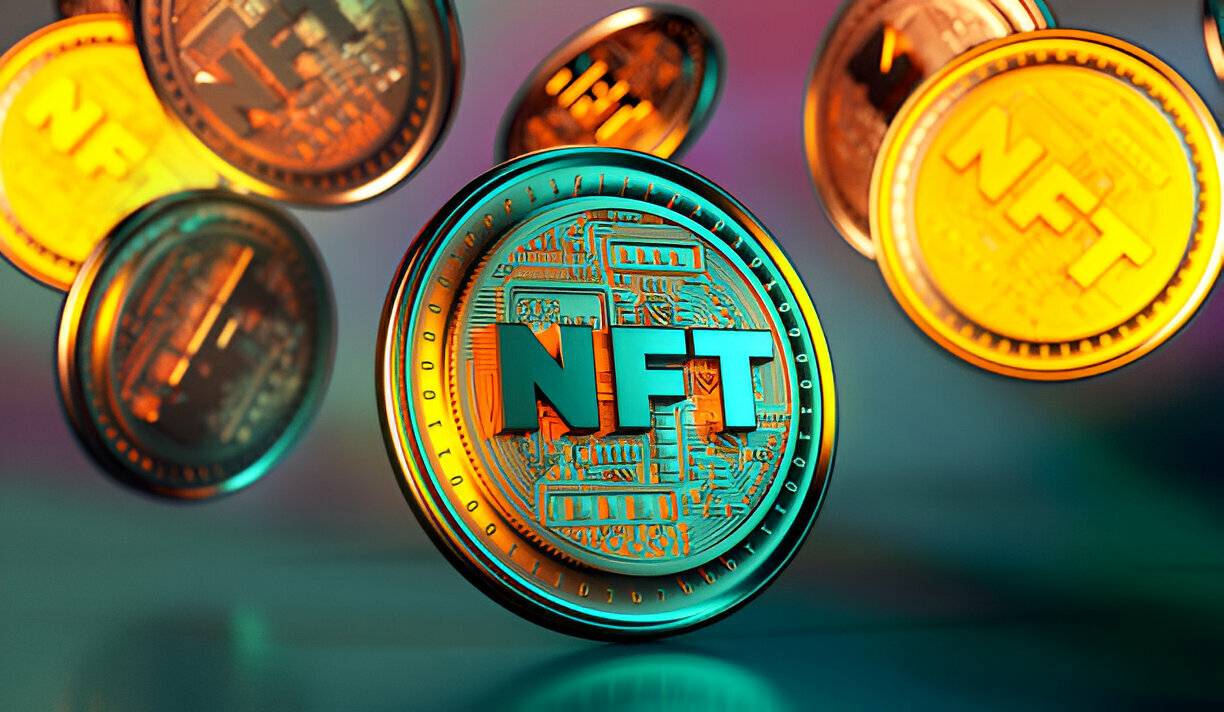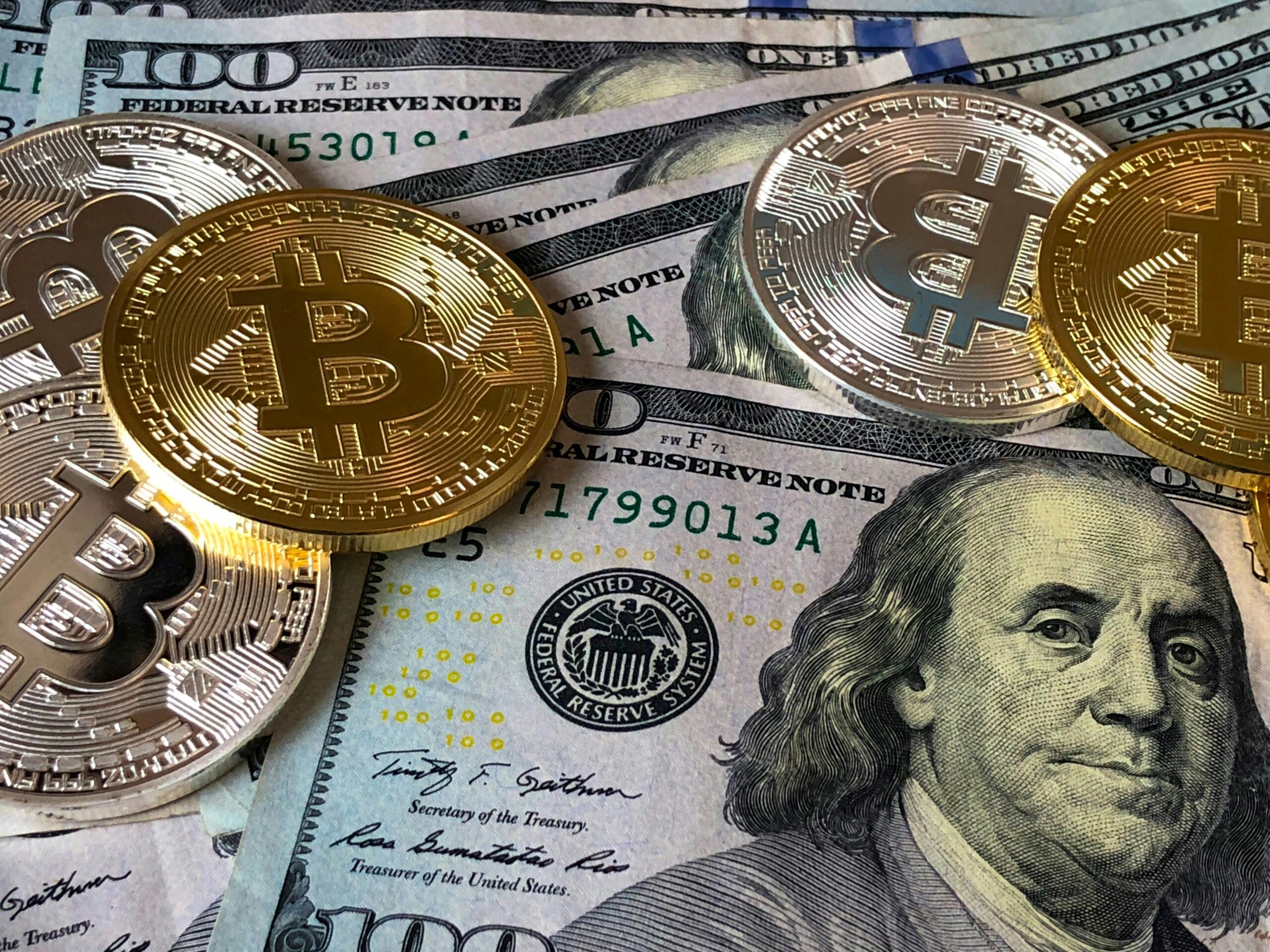Altcoins: Exploring Alternative Cryptocurrencies
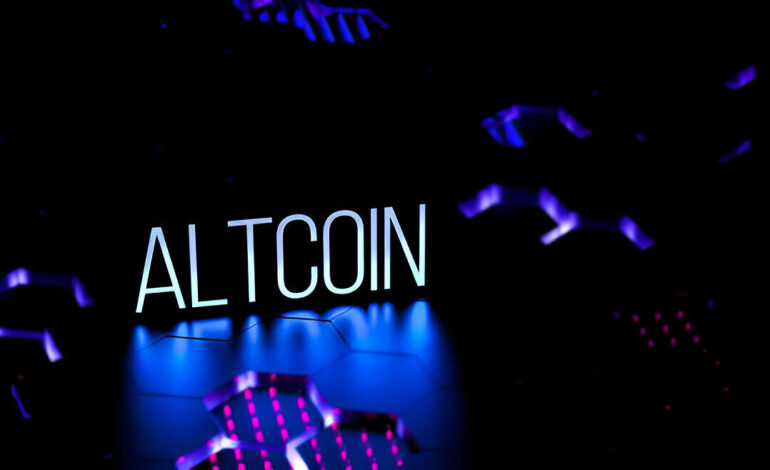
As the cryptocurrency market continues to evolve and expand, Bitcoin is no longer the sole player in the game. A diverse array of cryptocurrencies, often referred to as “altcoins,” has emerged to challenge Bitcoin’s dominance and bring unique features and use cases to the table. In this comprehensive guide, we will explore the world of altcoins, from their inception and characteristics to their potential impact on the broader financial landscape.
Introduction to Altcoins
Altcoins, a portmanteau of “alternative” and “coins,” are cryptocurrencies other than Bitcoin. They represent an extensive and diverse ecosystem of digital assets, each with its unique features, functions, and goals. While Bitcoin remains the most prominent and widely recognized cryptocurrency, altcoins offer innovative solutions, catering to various aspects of the digital economy.
Altcoins came into existence following the launch of Bitcoin in 2009, as developers and entrepreneurs recognized the potential for blockchain technology to disrupt traditional industries and create new opportunities. The proliferation of altcoins has led to a thriving market where investors, developers, and enthusiasts have flocked to support projects that align with their visions and objectives.
The Birth of Altcoins
The idea of altcoins emerged from the belief that Bitcoin, while groundbreaking, might not be a one-size-fits-all solution. As the first cryptocurrency, Bitcoin introduced the concept of decentralized digital currency and the blockchain technology underpinning it. However, it also had limitations, such as scalability and transaction speed issues.
Developers saw the potential to build upon the principles of blockchain and create alternative cryptocurrencies with distinct features and purposes. One of the earliest altcoins, Namecoin, was launched in April 2011. Namecoin aimed to extend the blockchain’s utility beyond a currency and provide a decentralized domain name system. This was the beginning of the altcoin revolution, as countless other projects followed suit.
Characteristics of Altcoins
Altcoins exhibit a wide range of characteristics, each designed to address specific challenges or explore new possibilities. Here are some of the key attributes that distinguish altcoins from one another:
Consensus Mechanisms: Altcoins may use different consensus mechanisms to validate transactions and secure their networks. While Bitcoin relies on proof of work (PoW), some altcoins use proof of stake (PoS), delegated proof of stake (DPoS), or other variations to achieve consensus.
Scalability Solutions: Many altcoins aim to address Bitcoin’s scalability issues by implementing technologies such as the Lightning Network, which enables faster and cheaper transactions.
Smart Contracts: Some altcoins, like Ethereum, enable the creation of smart contracts, self-executing agreements with the terms directly written into code.
Privacy Features: Privacy-focused altcoins, like Monero and Zcash, use advanced cryptography to enhance anonymity and transaction privacy.
Utility Tokens: These altcoins serve as tokens within a specific ecosystem or platform, providing access to services or products. Examples include Binance Coin (BNB) and Chainlink (LINK).
Stablecoins: Stablecoins are designed to maintain a stable value by pegging to traditional assets like fiat currencies or commodities. Tether (USDT) and USD Coin (USDC) are examples.
Niche Use Cases: Some altcoins target niche markets, such as gaming, healthcare, or supply chain management, offering tailored solutions to industry-specific challenges.
Governance Models: Altcoins may have different governance structures, allowing holders to vote on protocol upgrades or network decisions.
Interoperability: Altcoins can focus on interoperability, seeking to connect various blockchain networks and facilitate data sharing.
Popular Altcoins
The world of altcoins is vast and continuously expanding, making it impossible to cover all of them in one guide. However, some altcoins have gained prominence due to their unique features, strong communities, and innovative solutions. Here are a few of the most notable altcoins:
Ethereum (ETH): Ethereum is a pioneer in the world of smart contracts and decentralized applications (DApps). It allows developers to build applications on its blockchain, offering diverse use cases beyond digital currency.
Ripple (XRP): Ripple focuses on enabling faster and cheaper cross-border payments for financial institutions. Its native digital asset, XRP, plays a role in facilitating these transactions.
Litecoin (LTC): Created as “digital silver” to Bitcoin’s “digital gold,” Litecoin offers faster transaction confirmation times and a different hashing algorithm.
Cardano (ADA): Cardano aims to provide a more secure and scalable infrastructure for the development of smart contracts and DApps. It emphasizes academic research and a peer-reviewed approach to its development.
Polkadot (DOT): Polkadot is a multi-chain network that enables different blockchains to interoperate, promoting cross-chain compatibility and communication.
Chainlink (LINK): Chainlink specializes in decentralized oracles, enabling smart contracts to interact with real-world data sources and APIs.
Stellar (XLM): Stellar focuses on making cross-border transactions more accessible and affordable for individuals and businesses, with a particular emphasis on financial inclusion.
Monero (XMR): Monero is a privacy-focused cryptocurrency that provides enhanced anonymity and transaction privacy.
Tezos (XTZ): Tezos is known for its on-chain governance system, enabling token holders to vote on protocol upgrades and network changes.
Solana (SOL): Solana is a high-performance blockchain that aims to support fast and secure decentralized applications and DeFi projects.
Altcoins and the Decentralized Finance (DeFi) Movement
One of the most significant developments in the cryptocurrency space is the rise of decentralized finance, or DeFi. DeFi encompasses a wide range of financial services and applications that operate without traditional intermediaries, such as banks. Altcoins play a crucial role in the DeFi movement by providing the infrastructure and tokens necessary to facilitate these services.
DeFi platforms use altcoins for lending, borrowing, trading, and yield farming, among other functions. Popular DeFi projects like MakerDAO, Compound, and Aave rely on altcoins as collateral and governance tokens, allowing users to participate in network decisions.
The DeFi ecosystem has grown exponentially, with Total Value Locked (TVL) in DeFi protocols reaching billions of dollars. This demonstrates the increasing demand for decentralized financial services and the integral role that altcoins play in supporting this movement.
Challenges and Risks of Altcoins
While altcoins offer diversity and innovation, they are not without challenges and risks. Here are some of the potential concerns associated with altcoins:
Volatility: Many altcoins exhibit higher price volatility than Bitcoin, which can result in significant price fluctuations.
Lack of Liquidity: Some altcoins may have lower trading volumes, making it more challenging to buy or sell large amounts without affecting the market price.
Regulatory Uncertainty: Altcoins are subject to evolving regulatory landscapes, and their legal status may vary from one jurisdiction to another.
Security Vulnerabilities: Altcoins, particularly newer projects, may be more susceptible to security vulnerabilities or smart contract bugs.
Market Sentiment: Altcoin prices can be influenced by market sentiment, social media trends, and speculation.
Project Sustainability: The success of an altcoin often depends on the development team’s ability to deliver on their promises and maintain the project’s sustainability.
Competition: The altcoin market is highly competitive, with many projects vying for attention and adoption.
Exit Scams: Some altcoins have been associated with fraudulent activities or “exit scams,” where the project’s creators disappear with investors’ funds.
Investors and enthusiasts should conduct thorough research and exercise caution when exploring the world of altcoins. Due diligence, including understanding the project’s team, technology, use case, and community support, is essential.
The Future of Altcoins
The future of altcoins is a topic of considerable debate and speculation. Some believe that altcoins will continue to diversify and offer unique solutions for specific use cases, further enhancing the cryptocurrency ecosystem. Others argue that Bitcoin will maintain its dominance as a store of value, while altcoins will primarily serve as tools for decentralized applications and financial services.
Altcoins have the potential to address various challenges and opportunities, from improving financial inclusion and cross-border payments to revolutionizing supply chain management and identity verification. Projects are continually innovating and collaborating, pushing the boundaries of what is possible in the world of blockchain technology.
Interoperability between different blockchain networks is also becoming a focus, allowing assets and data to flow seamlessly between various blockchains. This interoperability can promote collaboration and expand the potential use cases for altcoins.
While altcoins face uncertainties, including regulatory developments and market competition, they remain an essential part of the cryptocurrency ecosystem, offering valuable alternatives to traditional financial systems and exploring new horizons in technology.
Conclusion
Altcoins, or alternative cryptocurrencies, have played a significant role in shaping the cryptocurrency landscape. With diverse features, use cases, and objectives, they offer innovative solutions to challenges in various industries, from finance and supply chain management to identity verification and cross-border payments.
The world of altcoins is vast and continually evolving, with projects exploring novel technologies and use cases. As the cryptocurrency market matures, altcoins will continue to play a vital role in expanding the possibilities of blockchain technology.
However, altcoins are not without risks, and potential investors should conduct thorough research and exercise caution. Regulatory landscapes, project sustainability, and market sentiment can all impact the success and adoption of altcoins.
The future of altcoins remains uncertain, but their resilience, innovation, and commitment to pushing the boundaries of blockchain technology suggest that they will continue to be a driving force in the cryptocurrency ecosystem. Staying informed about these developments is essential for anyone interested in the world of digital assets and decentralized technologies.
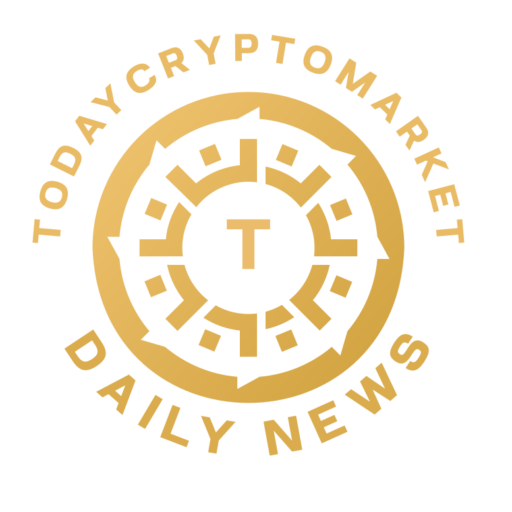
 Bitcoin
Bitcoin  Ethereum
Ethereum  Tether
Tether  XRP
XRP  USDC
USDC  TRON
TRON  Lido Staked Ether
Lido Staked Ether  Dogecoin
Dogecoin  Figure Heloc
Figure Heloc  Cardano
Cardano  WhiteBIT Coin
WhiteBIT Coin  Bitcoin Cash
Bitcoin Cash  Wrapped stETH
Wrapped stETH  Wrapped Bitcoin
Wrapped Bitcoin  USDS
USDS  Wrapped eETH
Wrapped eETH  Binance Bridged USDT (BNB Smart Chain)
Binance Bridged USDT (BNB Smart Chain)  Chainlink
Chainlink  Monero
Monero  LEO Token
LEO Token  WETH
WETH  Stellar
Stellar  Zcash
Zcash  Ethena USDe
Ethena USDe  Coinbase Wrapped BTC
Coinbase Wrapped BTC  Litecoin
Litecoin  Hyperliquid
Hyperliquid  Sui
Sui  Avalanche
Avalanche  Hedera
Hedera  sUSDS
sUSDS  Dai
Dai  USDT0
USDT0  Shiba Inu
Shiba Inu  PayPal USD
PayPal USD  Cronos
Cronos  Toncoin
Toncoin  World Liberty Financial
World Liberty Financial  Uniswap
Uniswap  Ethena Staked USDe
Ethena Staked USDe  Mantle
Mantle  Canton
Canton  USD1
USD1  Polkadot
Polkadot  Rain
Rain  Bitget Token
Bitget Token  Tether Gold
Tether Gold  MemeCore
MemeCore  OKB
OKB  Aave
Aave  Falcon USD
Falcon USD  Bittensor
Bittensor  NEAR Protocol
NEAR Protocol  Ethereum Classic
Ethereum Classic  Binance-Peg WETH
Binance-Peg WETH  BlackRock USD Institutional Digital Liquidity Fund
BlackRock USD Institutional Digital Liquidity Fund  Jito Staked SOL
Jito Staked SOL  Pi Network
Pi Network  Pepe
Pepe  Internet Computer
Internet Computer  PAX Gold
PAX Gold  Aster
Aster  syrupUSDC
syrupUSDC  Circle USYC
Circle USYC  HTX DAO
HTX DAO  Global Dollar
Global Dollar  Wrapped SOL
Wrapped SOL  Ethena
Ethena  Sky
Sky  Jupiter Perpetuals Liquidity Provider Token
Jupiter Perpetuals Liquidity Provider Token  KuCoin
KuCoin  Ripple USD
Ripple USD  BFUSD
BFUSD  Binance Bridged USDC (BNB Smart Chain)
Binance Bridged USDC (BNB Smart Chain)  Worldcoin
Worldcoin  Midnight
Midnight  Rocket Pool ETH
Rocket Pool ETH  Gate
Gate  Ondo
Ondo  Aptos
Aptos  Binance Staked SOL
Binance Staked SOL  Wrapped BNB
Wrapped BNB  POL (ex-MATIC)
POL (ex-MATIC)  Quant
Quant  Arbitrum
Arbitrum  Janus Henderson Anemoy AAA CLO Fund
Janus Henderson Anemoy AAA CLO Fund  Pump.fun
Pump.fun  Algorand
Algorand  Lombard Staked BTC
Lombard Staked BTC  Official Trump
Official Trump  Function FBTC
Function FBTC  Cosmos Hub
Cosmos Hub  Filecoin
Filecoin  NEXO
NEXO  Solv Protocol BTC
Solv Protocol BTC  VeChain
VeChain  USDtb
USDtb  Liquid Staked ETH
Liquid Staked ETH  USDD
USDD  Superstate Short Duration U.S. Government Securities Fund (USTB)
Superstate Short Duration U.S. Government Securities Fund (USTB)  OUSG
OUSG  WrappedM by M^0
WrappedM by M^0  Beldex
Beldex  Polygon Bridged USDC (Polygon PoS)
Polygon Bridged USDC (Polygon PoS)  Sei
Sei  Arbitrum Bridged WBTC (Arbitrum One)
Arbitrum Bridged WBTC (Arbitrum One)  clBTC
clBTC  Ondo US Dollar Yield
Ondo US Dollar Yield  Mantle Staked Ether
Mantle Staked Ether  USDai
USDai  Renzo Restaked ETH
Renzo Restaked ETH  syrupUSDT
syrupUSDT  Bonk
Bonk  Render
Render  Polygon PoS Bridged DAI (Polygon POS)
Polygon PoS Bridged DAI (Polygon POS)  Wrapped Flare
Wrapped Flare  L2 Standard Bridged WETH (Base)
L2 Standard Bridged WETH (Base)  PancakeSwap
PancakeSwap  Kinetiq Staked HYPE
Kinetiq Staked HYPE  MYX Finance
MYX Finance  StakeWise Staked ETH
StakeWise Staked ETH  Jupiter
Jupiter  Jupiter Staked SOL
Jupiter Staked SOL  Usual USD
Usual USD  Pudgy Penguins
Pudgy Penguins  c8ntinuum
c8ntinuum  Curve DAO
Curve DAO  tBTC
tBTC  Arbitrum Bridged WETH (Arbitrum One)
Arbitrum Bridged WETH (Arbitrum One)  Optimism
Optimism  Spiko EU T-Bills Money Market Fund
Spiko EU T-Bills Money Market Fund  GHO
GHO  TrueUSD
TrueUSD  Story
Story  cgETH Hashkey Cloud
cgETH Hashkey Cloud  pippin
pippin  Artificial Superintelligence Alliance
Artificial Superintelligence Alliance  GTETH
GTETH  Lido DAO
Lido DAO  Merlin Chain
Merlin Chain  Tezos
Tezos  Dash
Dash  Injective
Injective  Ether.fi
Ether.fi  AB
AB  Virtuals Protocol
Virtuals Protocol  Stacks
Stacks  Stader ETHx
Stader ETHx  Ether.Fi Liquid ETH
Ether.Fi Liquid ETH  SPX6900
SPX6900  Aerodrome Finance
Aerodrome Finance  Marinade Staked SOL
Marinade Staked SOL  Swell Ethereum
Swell Ethereum  sBTC
sBTC  Wrapped ApeCoin
Wrapped ApeCoin  JUST
JUST  Sun Token
Sun Token  Starknet
Starknet  The Graph
The Graph  BitTorrent
BitTorrent  FLOKI
FLOKI  Coinbase Wrapped Staked ETH
Coinbase Wrapped Staked ETH  Steakhouse USDC Morpho Vault
Steakhouse USDC Morpho Vault  Celestia
Celestia  DoubleZero
DoubleZero  Audiera
Audiera  Bitcoin SV
Bitcoin SV  AINFT
AINFT  EURC
EURC  Olympus
Olympus  Telcoin
Telcoin  Maple Finance
Maple Finance  Chiliz
Chiliz  Cap USD
Cap USD  Ethereum Name Service
Ethereum Name Service  Conflux
Conflux  Avalanche Bridged BTC (Avalanche)
Avalanche Bridged BTC (Avalanche)  Kinesis Gold
Kinesis Gold  IOTA
IOTA  Trust Wallet
Trust Wallet  Resolv USR
Resolv USR  crvUSD
crvUSD  Kaia
Kaia  Pyth Network
Pyth Network  Binance-Peg Dogecoin
Binance-Peg Dogecoin  Resolv wstUSR
Resolv wstUSR  Gnosis
Gnosis  dogwifhat
dogwifhat  Binance-Peg BUSD
Binance-Peg BUSD  JasmyCoin
JasmyCoin  Arbitrum Bridged Wrapped eETH (Arbitrum)
Arbitrum Bridged Wrapped eETH (Arbitrum)  BENQI Liquid Staked AVAX
BENQI Liquid Staked AVAX  Humanity
Humanity  Vision
Vision  Basic Attention
Basic Attention  ether.fi Staked ETH
ether.fi Staked ETH  The Sandbox
The Sandbox  Unit Bitcoin
Unit Bitcoin  Helium
Helium  GALA
GALA  Legacy Frax Dollar
Legacy Frax Dollar  Fartcoin
Fartcoin  Pendle
Pendle  Mantle Restaked ETH
Mantle Restaked ETH  Flow
Flow  Kinesis Silver
Kinesis Silver  Zebec Network
Zebec Network  Polygon PoS Bridged WETH (Polygon POS)
Polygon PoS Bridged WETH (Polygon POS)  Theta Network
Theta Network  Fidelity Digital Interest Token
Fidelity Digital Interest Token  Janus Henderson Anemoy Treasury Fund
Janus Henderson Anemoy Treasury Fund  Gate Wrapped BTC
Gate Wrapped BTC  MimbleWimbleCoin
MimbleWimbleCoin  SwissBorg
SwissBorg  Sonic
Sonic  Decred
Decred  Aster Staked BNB
Aster Staked BNB  LayerZero
LayerZero  BTSE Token
BTSE Token  Binance Wrapped BTC
Binance Wrapped BTC  Plasma
Plasma  NEO
NEO  Mantle Bridged WETH (Mantle)
Mantle Bridged WETH (Mantle)  Wrapped STX (Velar)
Wrapped STX (Velar)  Ape and Pepe
Ape and Pepe  ZKsync
ZKsync  Staked USDai
Staked USDai  Raydium
Raydium  Compound
Compound  Arbitrum Bridged wstETH (Arbitrum)
Arbitrum Bridged wstETH (Arbitrum)  Wrapped HYPE
Wrapped HYPE  Noble USDC
Noble USDC  Wrapped Aave Ethereum USDC
Wrapped Aave Ethereum USDC  RealLink
RealLink  Quantum Resistant Ledger
Quantum Resistant Ledger  Decentraland
Decentraland  USDa
USDa  YLDS
YLDS  Falcon Finance
Falcon Finance  Arweave
Arweave  Monad
Monad  AUSD
AUSD  Drift Staked SOL
Drift Staked SOL  Bybit Staked SOL
Bybit Staked SOL  Terra Luna Classic
Terra Luna Classic  Savings Dai
Savings Dai  Loaded Lions
Loaded Lions  Blockchain Capital
Blockchain Capital  WeFi
WeFi  1INCH
1INCH  Polygon Bridged WBTC (Polygon POS)
Polygon Bridged WBTC (Polygon POS)  Wrapped AVAX
Wrapped AVAX  eCash
eCash  Golem
Golem  BUILDon
BUILDon  Solv Protocol Staked BTC
Solv Protocol Staked BTC  Legacy Token
Legacy Token  THORChain
THORChain  Fluid
Fluid  Treehouse ETH
Treehouse ETH  Tradable NA Rent Financing Platform SSTN
Tradable NA Rent Financing Platform SSTN  Ultima
Ultima  InfiniFi USD
InfiniFi USD  Staked Cap USD
Staked Cap USD  MX
MX  Cheems Token
Cheems Token  Lombard
Lombard  OriginTrail
OriginTrail  Immutable
Immutable  EigenCloud (prev. EigenLayer)
EigenCloud (prev. EigenLayer)  Walrus
Walrus  Cronos Bridged USDC (Cronos)
Cronos Bridged USDC (Cronos)  Zora
Zora  MultiversX
MultiversX  Wrapped Aave Ethereum USDT
Wrapped Aave Ethereum USDT  ApeCoin
ApeCoin  Ethena Staked ENA
Ethena Staked ENA  UCHAIN
UCHAIN  Kamino
Kamino  Wormhole
Wormhole  Aster USDF
Aster USDF  WEMIX
WEMIX  Onyxcoin
Onyxcoin  Stable
Stable  0G
0G  Theo Short Duration US Treasury Fund
Theo Short Duration US Treasury Fund  Satoshi Stablecoin
Satoshi Stablecoin  KOGE
KOGE  Kraken Wrapped BTC
Kraken Wrapped BTC  StandX DUSD
StandX DUSD  Ribbita by Virtuals
Ribbita by Virtuals  Convex Finance
Convex Finance  Spiko US T-Bills Money Market Fund
Spiko US T-Bills Money Market Fund  Flare Bridged XRP (Flare)
Flare Bridged XRP (Flare)  SafePal
SafePal  SoSoValue
SoSoValue  SOON
SOON  GUSD
GUSD  Reserve Rights
Reserve Rights  Bedrock BTC
Bedrock BTC  BitMart
BitMart  Jito
Jito  Midas mF-ONE
Midas mF-ONE  Amp
Amp  STASIS EURO
STASIS EURO  Synthetix
Synthetix  Aethir
Aethir  Wrapped Pulse
Wrapped Pulse  Brett
Brett  Alchemist AI
Alchemist AI  Tokenize Xchange
Tokenize Xchange  Resolv Liquidity Provider Token
Resolv Liquidity Provider Token  Origin Ether
Origin Ether  Axie Infinity
Axie Infinity  Livepeer
Livepeer  SuperVerse
SuperVerse  Nexus Mutual
Nexus Mutual  MetaDAO
MetaDAO  Theta Fuel
Theta Fuel  Wrapped Ethereum (Sollet)
Wrapped Ethereum (Sollet)  Binance-Peg SOL
Binance-Peg SOL  GoMining Token
GoMining Token  DeXe
DeXe  Apollo Diversified Credit Securitize Fund
Apollo Diversified Credit Securitize Fund  Universal BTC
Universal BTC  StarkGate Bridged USDC (Starknet)
StarkGate Bridged USDC (Starknet)  Qtum
Qtum  dYdX
dYdX  Phantom Staked SOL
Phantom Staked SOL  Prom
Prom  Four
Four  Grass
Grass  RaveDAO
RaveDAO  Concordium
Concordium  The American Dream
The American Dream  Creditcoin
Creditcoin  DOLA
DOLA  Frax USD
Frax USD  Bridged Wrapped Ether (Linea)
Bridged Wrapped Ether (Linea)  Rollbit Coin
Rollbit Coin  Kusama
Kusama  Ozone Chain
Ozone Chain  Conscious Token
Conscious Token  Velo
Velo  Gauntlet USDC Prime Morpho Vault
Gauntlet USDC Prime Morpho Vault  Pleasing USD
Pleasing USD  ether.fi weETHs
ether.fi weETHs  Toshi
Toshi  币安人生 (BinanceLife)
币安人生 (BinanceLife)  Polygon Bridged weETH (Katana)
Polygon Bridged weETH (Katana)  Core
Core  CoW Protocol
CoW Protocol  Gas
Gas  AIOZ Network
AIOZ Network  Super OETH
Super OETH  PayFi Strategy Token USDC
PayFi Strategy Token USDC  KAITO
KAITO  Meteora
Meteora  yearn.finance
yearn.finance  Gaib AI Dollar Alpha USDC
Gaib AI Dollar Alpha USDC  Impossible Cloud Network Token
Impossible Cloud Network Token  ADI
ADI  Staked TRX
Staked TRX  Shuffle
Shuffle  Turbo
Turbo  Crypto.com Staked ETH
Crypto.com Staked ETH  Railgun
Railgun  MAG7.ssi
MAG7.ssi  Nervos Network
Nervos Network  Rekt
Rekt  AWE Network
AWE Network  Anzen USDz
Anzen USDz  KUB Coin
KUB Coin  Ravencoin
Ravencoin  Linea
Linea  ETHPlus
ETHPlus  Niza Global
Niza Global  Akash Network
Akash Network  cWBTC
cWBTC  Wrapped Aave Ethereum WETH
Wrapped Aave Ethereum WETH  DigiByte
DigiByte  Movement
Movement  Wrapped Savings rUSD
Wrapped Savings rUSD  Tradable Singapore Fintech SSL
Tradable Singapore Fintech SSL  Ring USD
Ring USD  Baby Doge Coin
Baby Doge Coin  Arkham
Arkham  Keeta
Keeta  QOM One Bridged USDT (QL1)
QOM One Bridged USDT (QL1)  USDA
USDA  MNEE USD Stablecoin
MNEE USD Stablecoin  Ronin
Ronin  Ether.fi Staked BTC
Ether.fi Staked BTC  Savings xDAI
Savings xDAI  Threshold Network
Threshold Network  Melania Meme
Melania Meme  0x Protocol
0x Protocol  BurnedFi
BurnedFi  Dog (Bitcoin)
Dog (Bitcoin)  CASH
CASH  Avantis
Avantis  Mina Protocol
Mina Protocol  AgentFun.AI
AgentFun.AI  Novem Pro
Novem Pro  CoinEx
CoinEx  Qubic
Qubic  TempleDAO
TempleDAO  Open Campus
Open Campus  Nano
Nano  Avant USD
Avant USD  Hastra Wrapped YLDS
Hastra Wrapped YLDS  TDCCP
TDCCP  Renzo Restaked LST
Renzo Restaked LST  cETH
cETH  Wrapped Glue
Wrapped Glue  Babypie Wrapped BTC
Babypie Wrapped BTC  PRIME
PRIME  Pleasing Gold
Pleasing Gold  Drift Protocol
Drift Protocol  Zilliqa
Zilliqa  COCA
COCA  Safe
Safe  Cronos Bridged USDT (Cronos)
Cronos Bridged USDT (Cronos)  Unibase
Unibase  AI Companions
AI Companions  River
River  Pieverse
Pieverse  Jelly-My-Jelly
Jelly-My-Jelly  Nexpace
Nexpace  Staked HYPE
Staked HYPE  Luxxcoin
Luxxcoin  ViciCoin
ViciCoin  DeepBook
DeepBook  staked USD1+
staked USD1+  GMX
GMX  Holo
Holo  Metal Blockchain
Metal Blockchain  VanEck Treasury Fund
VanEck Treasury Fund  Re Protocol reUSD
Re Protocol reUSD  SentismAI
SentismAI  Siacoin
Siacoin  ZIGChain
ZIGChain  INI
INI  Avant Staked USD
Avant Staked USD  Midas mHYPER
Midas mHYPER  VVS Finance
VVS Finance  Vana
Vana  Kava
Kava  MANTRA
MANTRA  Mog Coin
Mog Coin  Astar
Astar  QuantixAI
QuantixAI  Berachain
Berachain  Axelar
Axelar  Moonwell Flagship ETH (Morpho Vault)
Moonwell Flagship ETH (Morpho Vault)  ORDI
ORDI  VeThor
VeThor  Moca Network
Moca Network  VaultBridge Bridged WBTC (Katana)
VaultBridge Bridged WBTC (Katana)  Swop
Swop  OpenEden OpenDollar
OpenEden OpenDollar  Slash Vision Labs
Slash Vision Labs  sUSDa
sUSDa  EUR CoinVertible
EUR CoinVertible  Sushi
Sushi  Magic Eden
Magic Eden  coco
coco  Popcat
Popcat  Gama Token
Gama Token  HashKey Platform Token
HashKey Platform Token  Non-Playable Coin
Non-Playable Coin  Felix feUSD
Felix feUSD  Oasis
Oasis  Comedian
Comedian  BCGame Coin
BCGame Coin  XPR Network
XPR Network  ChainOpera AI
ChainOpera AI  OKX Wrapped BTC
OKX Wrapped BTC  Blur
Blur  XYO Network
XYO Network  Puff The Dragon
Puff The Dragon  Numeraire
Numeraire  cat in a dogs world
cat in a dogs world  Terra
Terra  Bio Protocol
Bio Protocol  Verus
Verus  Power Protocol
Power Protocol  Succinct
Succinct  Bridged Ether (StarkGate)
Bridged Ether (StarkGate)  Chia
Chia  ONFA
ONFA  Paycoin
Paycoin  Matrixdock Gold
Matrixdock Gold  Moo Deng
Moo Deng  L2 Standard Bridged WETH (Optimism)
L2 Standard Bridged WETH (Optimism)  Loopring
Loopring  Peanut the Squirrel
Peanut the Squirrel  Optio
Optio  aelf
aelf  Centrifuge
Centrifuge  MindWaveDAO
MindWaveDAO  Chutes
Chutes  Celo
Celo  Stargate Bridged USDC
Stargate Bridged USDC  Waves
Waves  earnAUSD
earnAUSD  Venus
Venus  AtomOne
AtomOne  Yooldo Games
Yooldo Games  pumpBTC
pumpBTC  Bridged Wrapped stETH (Gnosis)
Bridged Wrapped stETH (Gnosis)  Orca
Orca  Polymesh
Polymesh  Compounding OpenDollar
Compounding OpenDollar  IoTeX
IoTeX  Onchain Yield Coin
Onchain Yield Coin  Sahara AI
Sahara AI  Wrapped Centrifuge
Wrapped Centrifuge  Binance-Peg SHIB
Binance-Peg SHIB  Omni Network [Old]
Omni Network [Old]  Giggle Fund
Giggle Fund  RedStone
RedStone  DFDV Staked SOL
DFDV Staked SOL  Space and Time
Space and Time  Recall
Recall  UMA
UMA  Irys
Irys  Ankr Network
Ankr Network  BitDCA
BitDCA  Geodnet
Geodnet  HOME
HOME  Fluid Wrapped Staked ETH
Fluid Wrapped Staked ETH  USDX
USDX  SKALE
SKALE  Api3
Api3  Frax (prev. FXS)
Frax (prev. FXS)  stUSDT Staked USDT
stUSDT Staked USDT  Sign
Sign  APEX
APEX  Arbitrum Bridged USDC (Arbitrum)
Arbitrum Bridged USDC (Arbitrum)  Pundi X
Pundi X  GOHOME
GOHOME  Gold Park
Gold Park  Venice Token
Venice Token  LCX
LCX  Lagrange
Lagrange  Ardor
Ardor  Plume
Plume  Memecoin
Memecoin  Useless Coin
Useless Coin  Mask Network
Mask Network  f(x) USD Saving
f(x) USD Saving  SSV Network
SSV Network  BIM
BIM  opBNB Bridged USDT (opBNB)
opBNB Bridged USDT (opBNB)  AltLayer
AltLayer  Magic Internet Money (Ethereum)
Magic Internet Money (Ethereum)  OVERTAKE
OVERTAKE  EthereumPoW
EthereumPoW  OG Fan Token
OG Fan Token  ECOMI
ECOMI  BUSD
BUSD  Sologenic
Sologenic  Avalanche Bridged WETH (Avalanche)
Avalanche Bridged WETH (Avalanche)  Apertum
Apertum  FOLKS
FOLKS  Status
Status  Law Blocks
Law Blocks  Unit Pump
Unit Pump  Huma Finance
Huma Finance  APEX
APEX  Animecoin
Animecoin  Pirate Chain
Pirate Chain  Wrapped CRO
Wrapped CRO  Band
Band  Euler
Euler  Escoin
Escoin  COTI
COTI  Doodles
Doodles  Illuvium
Illuvium  Tokenlon
Tokenlon  Stargate Bridged WETH
Stargate Bridged WETH  Tellor Tributes
Tellor Tributes  Harmony
Harmony  Steakhouse ETH Morpho Vault
Steakhouse ETH Morpho Vault  Tesla xStock
Tesla xStock  Pax Dollar
Pax Dollar  Dialectic USD Vault
Dialectic USD Vault  Zedxion
Zedxion  Enjin Coin
Enjin Coin  ChangeNOW
ChangeNOW  WorldAssets
WorldAssets  Siren
Siren  PYTHIA
PYTHIA  Notcoin
Notcoin  USDKG
USDKG  HumidiFi
HumidiFi  Helder
Helder  VaultBridge Bridged USDC (Katana)
VaultBridge Bridged USDC (Katana)  WOO
WOO  Decentralized Social
Decentralized Social  VaultBridge Bridged ETH (Katana)
VaultBridge Bridged ETH (Katana)  TAGGER
TAGGER  IOST
IOST  Binance-Peg ZEC
Binance-Peg ZEC  SAFEbit
SAFEbit  CARV
CARV  Hex Trust USD
Hex Trust USD  Ontology
Ontology  ARK
ARK  Sui Bridged WBTC (Sui)
Sui Bridged WBTC (Sui)  VeraOne
VeraOne  Overnight.fi USD+
Overnight.fi USD+  Babylon
Babylon  Mountain Protocol USD
Mountain Protocol USD  Orbs
Orbs  Ronin Bridged WETH (Ronin)
Ronin Bridged WETH (Ronin)  Kinetiq Earn Vault
Kinetiq Earn Vault  YZY
YZY  SMARDEX
SMARDEX  Sygnum FIUSD Liquidity Fund
Sygnum FIUSD Liquidity Fund  Infrared Bera
Infrared Bera  Firelight Staked XRP
Firelight Staked XRP  Hive
Hive  Fulcrom
Fulcrom  MarsMi
MarsMi  Moonwell Flagship USDC (Morpho Vault)
Moonwell Flagship USDC (Morpho Vault)  MVL
MVL  Constellation
Constellation  Unit Plasma
Unit Plasma  ConstitutionDAO
ConstitutionDAO  Sui Bridged USDT (Sui)
Sui Bridged USDT (Sui)  NKYC Token
NKYC Token  Mezo Wrapped BTC
Mezo Wrapped BTC  Gemini Dollar
Gemini Dollar  iExec RLC
iExec RLC  StraitsX XUSD
StraitsX XUSD  StorX
StorX  Whiteheart
Whiteheart  rsERG
rsERG  BORA
BORA  Hivemapper
Hivemapper  Aegis YUSD
Aegis YUSD  Spark
Spark  Solar
Solar  Lisk
Lisk  GMT
GMT  Cronos Bridged WBTC (Cronos)
Cronos Bridged WBTC (Cronos)  Bancor Network
Bancor Network  Yield Guild Games
Yield Guild Games  Bridged Wrapped Bitcoin (StarkGate)
Bridged Wrapped Bitcoin (StarkGate)  Stargate Finance
Stargate Finance  Derive
Derive  Midas mTBILL
Midas mTBILL  SWFTCOIN
SWFTCOIN  KGeN
KGeN  Sui Bridged Ether (Sui)
Sui Bridged Ether (Sui)  Degen
Degen  Neiro
Neiro  Linea Bridged USDT (Linea)
Linea Bridged USDT (Linea)  Lista DAO
Lista DAO  Austin Capitals
Austin Capitals  Tornado Cash
Tornado Cash  Sai
Sai  AI Rig Complex
AI Rig Complex  Bridged NXPC
Bridged NXPC  Energy Web
Energy Web  bitcastle Token
bitcastle Token  Wrapped Bitcoin (PulseChain)
Wrapped Bitcoin (PulseChain)  BOLD
BOLD  Binance-Peg DAI
Binance-Peg DAI  Shentu
Shentu  CJournal
CJournal  Glidr
Glidr  Powerledger
Powerledger  Spell
Spell  Balancer
Balancer  XPIN Network
XPIN Network  Flux
Flux  Cloud
Cloud  Ondo U.S. Dollar Token
Ondo U.S. Dollar Token  Amnis Aptos
Amnis Aptos  UnifAI Network
UnifAI Network  Nirvana ANA
Nirvana ANA  Somnia
Somnia  Cross
Cross  Synthetix sUSD
Synthetix sUSD  Cysic
Cysic  Noble Dollar (USDN)
Noble Dollar (USDN)  Avalanche Bridged USDC (Avalanche)
Avalanche Bridged USDC (Avalanche)  Stronghold
Stronghold  Anoma
Anoma  Xertra
Xertra  Atoshi
Atoshi  Bonfida
Bonfida  Audius
Audius  Celium
Celium  AgentLISA
AgentLISA  Rocket Pool
Rocket Pool  Gems VIP
Gems VIP  Hermez Network
Hermez Network  BOOK OF MEME
BOOK OF MEME  Tokamak Network
Tokamak Network  Kyber Network Crystal
Kyber Network Crystal  Osmosis
Osmosis  Liquity
Liquity  Usual
Usual  Swarm Network
Swarm Network  Coinbase Wrapped XRP
Coinbase Wrapped XRP  Bitlight
Bitlight  Lava Network
Lava Network  Lista USD
Lista USD  Fractal Bitcoin
Fractal Bitcoin  Alchemy Pay
Alchemy Pay  Echelon Prime
Echelon Prime  Blast
Blast  Act I The AI Prophecy
Act I The AI Prophecy  CYBER
CYBER  Osaka Protocol
Osaka Protocol  Sanctum Infinity
Sanctum Infinity  BOTXCOIN
BOTXCOIN  Big Time
Big Time  Songbird
Songbird  TerraClassicUSD
TerraClassicUSD  Unipoly
Unipoly  Ergo
Ergo  Corn
Corn  IQ
IQ  BLOCKv
BLOCKv  io.net
io.net  Liquity USD
Liquity USD  Ridges AI
Ridges AI  Metis
Metis  PumpMeme
PumpMeme  Avici
Avici  Orderly
Orderly  Anvil
Anvil  OpenLedger
OpenLedger  BTU Protocol
BTU Protocol  Gigachad
Gigachad  TokenPocket Token
TokenPocket Token  Snowbank
Snowbank  Bit2Me
Bit2Me  MiL.k
MiL.k  WAX
WAX  HarryPotterObamaSonic10Inu (ETH)
HarryPotterObamaSonic10Inu (ETH)  Ontology Gas
Ontology Gas  Hylo USD
Hylo USD  Proprietary Trading Network
Proprietary Trading Network  Minidoge
Minidoge  Wrapped NXM
Wrapped NXM  The Grays Currency
The Grays Currency  Hypha Staked AVAX
Hypha Staked AVAX  Bounce
Bounce  Caldera
Caldera  Victoria VR
Victoria VR  Hive Dollar
Hive Dollar  Solayer
Solayer  Banana For Scale
Banana For Scale  AIntivirus
AIntivirus  Chromia
Chromia  Gains Network
Gains Network  Ocean Protocol
Ocean Protocol  Chain-key Bitcoin
Chain-key Bitcoin  Zentry
Zentry  CargoX
CargoX  Steem
Steem  Aevo
Aevo  Global Commercial Business
Global Commercial Business  Achain
Achain  Honey
Honey  Wrapped BCH
Wrapped BCH  Secret
Secret  Nym
Nym  Wrapped XRP
Wrapped XRP  Moonwell
Moonwell  XT Stablecoin XTUSD
XT Stablecoin XTUSD  Mango Network
Mango Network  Manta Network
Manta Network  Targon
Targon  Across Protocol
Across Protocol  Universal ETH
Universal ETH  PinkSale
PinkSale  Cobak
Cobak  Yield Basis
Yield Basis  Marlin
Marlin  Goatseus Maximus
Goatseus Maximus  USTBL
USTBL  SkyAI
SkyAI  Rootstock Infrastructure Framework
Rootstock Infrastructure Framework  DIA
DIA  Yuzu USD
Yuzu USD  Wrapped SEI
Wrapped SEI  Avalanche Bridged WBTC (Avalanche)
Avalanche Bridged WBTC (Avalanche)  Sad Coin
Sad Coin  SATS (Ordinals)
SATS (Ordinals)  f(x) Protocol fxUSD
f(x) Protocol fxUSD  Dacxi
Dacxi  DEAPCOIN
DEAPCOIN  Treasure
Treasure  哈基米 (Hajimi)
哈基米 (Hajimi)  Gravity (by Galxe)
Gravity (by Galxe)  Aurora
Aurora  Restaking Vault ETH
Restaking Vault ETH  Kujira
Kujira  Purr
Purr  Yield Optimizer ETH
Yield Optimizer ETH  BSquared Network
BSquared Network  Wrapped BTT (Tron)
Wrapped BTT (Tron)  Tree
Tree  sETH
sETH  TROLL
TROLL  Amiko
Amiko  Ventuals vHYPE
Ventuals vHYPE  Rainbow Bridged USDT (Near)
Rainbow Bridged USDT (Near)  Aergo
Aergo  GAL (migrated to Gravity - G)
GAL (migrated to Gravity - G)  Metal DAO
Metal DAO  ao Computer
ao Computer  XT.com
XT.com  Chainflip
Chainflip  Diverge Loop
Diverge Loop  zkPass
zkPass  Bifrost
Bifrost  dKargo
dKargo  tokenbot
tokenbot  Delysium
Delysium  Sapien
Sapien  Magma Finance
Magma Finance  Yield Optimizer USD
Yield Optimizer USD  Daku V2
Daku V2  Advertise Coin
Advertise Coin  Auki
Auki  WINkLink
WINkLink  Carrot
Carrot  Dialectic ETH Vault
Dialectic ETH Vault  Lucidum
Lucidum  sDOLA
sDOLA  Dymension
Dymension  Velvet
Velvet  Stables Labs USDX
Stables Labs USDX  Vine
Vine  Boundless
Boundless  Zerebro
Zerebro  MetaArena
MetaArena  ORE
ORE  Dogelon Mars
Dogelon Mars  infiniFi Locked iUSD (1week)
infiniFi Locked iUSD (1week)  PHALA
PHALA  Electronic USD
Electronic USD  Cartesi
Cartesi  Lorenzo stBTC
Lorenzo stBTC  A Hunters Dream
A Hunters Dream  Syndicate
Syndicate  Metaplex
Metaplex  QuarkChain
QuarkChain  DORA
DORA  MAI
MAI  Smooth Love Potion
Smooth Love Potion  Adshares
Adshares  Medibloc
Medibloc  Predictions
Predictions  Yei Finance
Yei Finance  Sophon
Sophon  B3 (Base)
B3 (Base)  Uquid Coin
Uquid Coin  Aster Staked USDF
Aster Staked USDF  aixbt
aixbt  Acet
Acet  SPDR S&P 500 ETF (Ondo Tokenized ETF)
SPDR S&P 500 ETF (Ondo Tokenized ETF)  Chintai
Chintai  Hyperlane
Hyperlane  NUMINE Token
NUMINE Token  Ankr Staked ETH
Ankr Staked ETH  Pre-SP
Pre-SP  Wiki Cat
Wiki Cat  Mira
Mira  Infrared Finance
Infrared Finance  Solv Protocol SolvBTC Jupiter
Solv Protocol SolvBTC Jupiter  aura
aura  QANplatform
QANplatform  SKOR AI
SKOR AI  Hyperbeat USDT
Hyperbeat USDT  Savings crvUSD
Savings crvUSD  Tensor
Tensor  Hippo Protocol
Hippo Protocol  Resolv
Resolv  GXChain
GXChain  Wrapped POL
Wrapped POL  Ika
Ika  Midas mMEV
Midas mMEV  Monerium EUR emoney
Monerium EUR emoney  USDu
USDu  Compound USDC
Compound USDC  Quack AI
Quack AI  Iagon
Iagon  cBAT
cBAT  affine
affine  WazirX
WazirX  Metronome Synth ETH
Metronome Synth ETH  Wrapped Zedxion
Wrapped Zedxion  BabyBoomToken
BabyBoomToken  Arcblock
Arcblock  StakeStone
StakeStone  Clearpool
Clearpool  Metronome Synth USD
Metronome Synth USD  Ozapay
Ozapay  MAP Protocol
MAP Protocol  Pocket Network
Pocket Network  PunkStrategy
PunkStrategy  TCY
TCY  EURA
EURA  Palladium Network
Palladium Network  SynFutures
SynFutures  Baby Shark Universe
Baby Shark Universe  Wrapped CORE
Wrapped CORE  Definitive
Definitive  Injective Bridged USDT (Injective)
Injective Bridged USDT (Injective)  Sonic SVM
Sonic SVM  BOB (Build on Bitcoin)
BOB (Build on Bitcoin)  Cookie DAO
Cookie DAO  Elephant Money
Elephant Money  Hylo Staked SOL
Hylo Staked SOL  SuperWalk GRND
SuperWalk GRND  Vault Bridge Bridged USDT (Katana)
Vault Bridge Bridged USDT (Katana)  Wrapped FRAX
Wrapped FRAX  L2 Standard Bridged USDT (Base)
L2 Standard Bridged USDT (Base)  IXS
IXS  ChainGPT
ChainGPT  SPACE ID
SPACE ID  Incrypt
Incrypt  0xy
0xy  Gyroscope GYD
Gyroscope GYD  saffron.finance
saffron.finance  Holoworld
Holoworld  Midas XRP
Midas XRP  Binance-Peg Avalanche
Binance-Peg Avalanche  OlaXBT
OlaXBT  Banana Gun
Banana Gun 